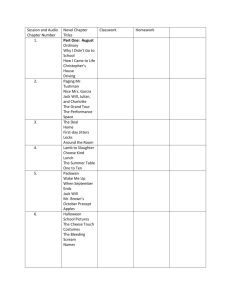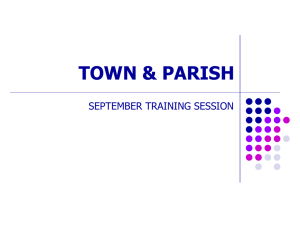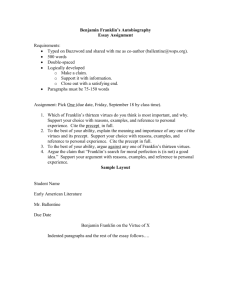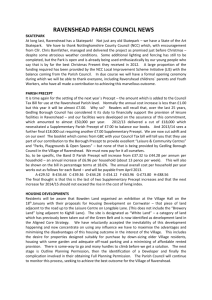Realism in Literature
advertisement
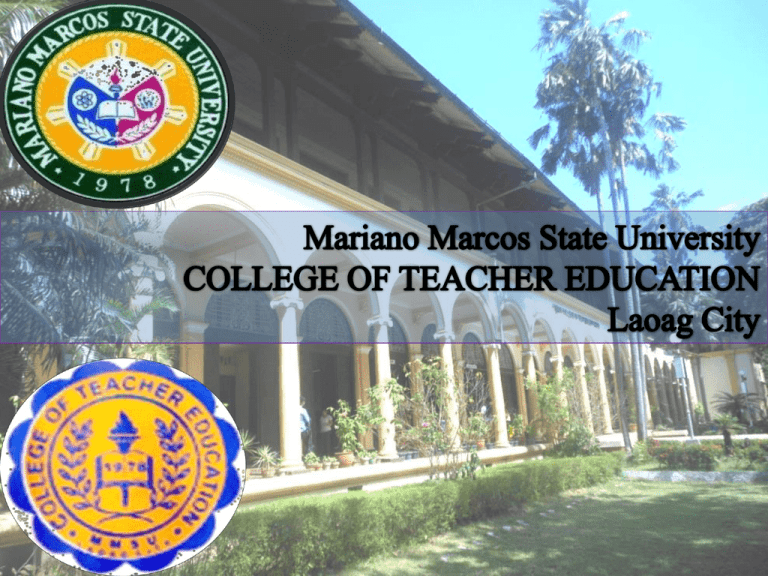
Realism in Literature: A Study Guide on the Short Story, The Visitation of Gods by Gilda Cordero-Fernando Background of the Realism Trend in Literature • Realism is an artistic movement that begun in 19th century France wherein artists and writers strove for detailed realistic and factual descriptions. They tried to represent events and social conditions as they actually are, without idealization. • Realism aims to interpret the actualities of any aspect of life, free from subjective prejudice, idealism, or romantic color. It is in direct opposition to concerns of the unusual, the basis of Romanticism. It stresses the real over the fantastic. • Realism also seeks to treat the commonplace truthfully and uses characters from everyday life. This emphasis was brought on by societal changes such as the aftermath of the Civil War in the United States and the emergence of Darwin's Theory of Evolution and its effect upon biblical interpretation. Vignette The Gods will be visiting Pugad Lawin area once again. The teacher, pay and paints are moving heaven and earth for a magnanimous progress for the God’s visitation. All are in frenzy except for Miss Noel, an English teacher. How can she change this mediocre custom? Will she be able to do it alone? The Author Gilda Cordero-Fernando is a multi-awarded writer, publisher and cultural icon from the Philippines. She has a B.A. from St. Theresa's CollegeManila and an M.A. from the Ateneo de Manila University. • Gilda Cordero-Fernando was born on June 4, 1932 in Manila . • Cordero-Fernando has two landmark collection of short stories: The Butcher, The Baker and The Candlestick Maker (1962) and A Wilderness of Sweets (1973). These books have been compiled and reissued later as Story Collection (1994). Another book, Philippine Food and Life, was published in 1992. • Together with Alfredo Roces, CorderoFernando worked on Filipino Heritage, a 10volume study on Philippine history and culture published by Lahing Pilipino in 1978. • She founded GCF Books which published a dozen titles that deal with various aspects of Philippine culture and society. • Cordero-Fernando has also worn numerous other hats as a visual artist, fashion designer, playwright, art curator and producer. In February 2000, she produced a hugely successful extravaganza. GENERAL PRECEPTS General Precept Paragraph/ Sentence Evidence of the General Precept Justification 1. Realism forwards that literature’s function is simply to report what happens, without any embellishments. The letter announcing the visitation (a yearly descent upon the school by the superintendent, the district supervisors and the division supervisors for “purposes of inspection and evaluation) had been delivered in the morning in the morning by the sleepy janitor to the principal. General Precept no.1 is present in this part because the story was presented in a straight forward manner. There is no embellishment in what happened and was stated in the perspective view of a real happening in real situation. General Precept The subject matter of realist texts are the on ordinary people and ordinary events in their lives. Paragraph/ Sentence Evidence of the General Precept Justification The teaching staff and the student body had been divided into four working groups. General Precept no.2 is present in this sentence in the story because it presents ordinary people. The story is a ordinary event in life and so the people involved are. Teachers and students are considered to be ordinary because they usually appear in our everyday lives and we can see them everyday. General Precept Paragraph/ Sentence Evidence of the General Precept Justification Realism highlights the characters rather than the actual plot. Vainly, Miss Noel searched in the crowd for the old Language Arts supervisor. All the years she had been in Pugad Lawin, Mr. Ampil had come: in him there was no sickening bureaucracy, none of the self-importance and pettiness that often characterized the small public official . He was dedicated to the service of education, had grown old in it. He was about the finest man Miss Noel had ever known. This part of the story focuses in the sentiments of the main character. General Precept no.3 is present because it “highlights” the main character’s persona through showcasing her emotion. Through this, the focus of the story strongly believe in the realistic view of the main character of the situation she is tangled with. General Precept Paragraph/ Sentence Evidence of the General Precept 4. The diction of Realist "I thought all teachers texts are natural (talking hated strict supervisors." Mr. Sawit elucidated. and conversational). "Didn't you all quake for your life when Mr. Ampil was there waiting at the door of the classroom even before you opened it with your key?" "Feared him, yes," said Miss Noel. "But also respected and admired him for what he stood for." Justification The General Precept no. 4 is prevalent in this part of the story because the story is presented in a conversational manner and was natural because the character’s dialogues are proper because it is stated in their own view not being affected by any external factor. The conversation is natural due to the words used; stated in the character’s occupation and self understanding of the situation present in the story. General Precept Realism focuses mainly on present issues and truth rather than the past and fantasy. Paragraph/ Sentence Evidence of the General Precept Justification "Isn't it obvious? You announce a whole month ahead that you're visiting. We clean the schoolhouse, tuck the trash in the drawers, bring out our best manners. As you said before, we rehearse our classes. Then we roll out the red carpet - and you believe you observe us in our everyday surrounding, in our everyday comportment?" This part of the story shows that general precept no. 4 is evident in the story because the situation is happening in the present time and is one of the concern of the character. The situation is considered to be timely due to the contextualization of the author of the character in the story and does not present any issue that has passed and is considered to be a cliché to be talked in the story’s content. Guide Questions Subject Matter/ Theme • 1. Does the literary piece simply report events without any embellishments? Does it present the truthful representation of life? • 2. Does the literary piece portray the way of life of the common people? • 3. Does the literary piece showcase problems/ issues relevant to the present time? Character/ Persona • 1. Is the character a representative of the common/ average people? • 2. Is the character more pragmatic in his views and practices rather than idealistic or realistic? • 3. How does the character react and act on the events that happened in the story? Cite sentences and phrases in the story. • 4. Does the character in the story experience conflicts from his/her environment especially from the ongoing social issues that is beyond his/her control? Style • 1. Does the literary piece highlight the character rather the plot? How does it highlight the character? Cite specific sentences and phrases from the story. • 2. Is the diction used in the literary piece conversational ? Cite some sentences and phrases. • 3. Does the literary piece describe the world in realistic detail and expose its absurdities? • 4. Does the literary piece presents facts only? Cite sentences and phrases in the story showing such. About the Researchers THANK YOU
